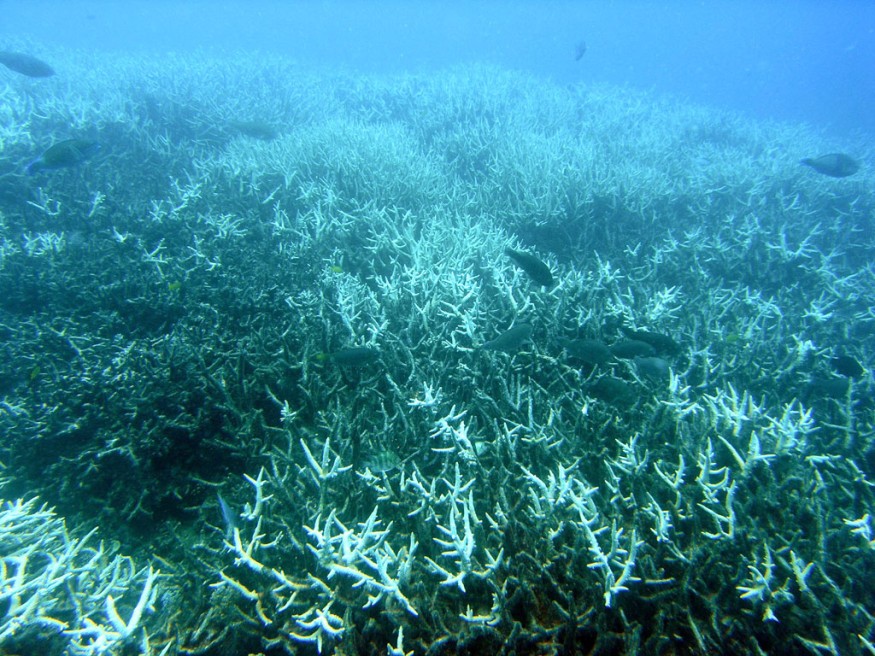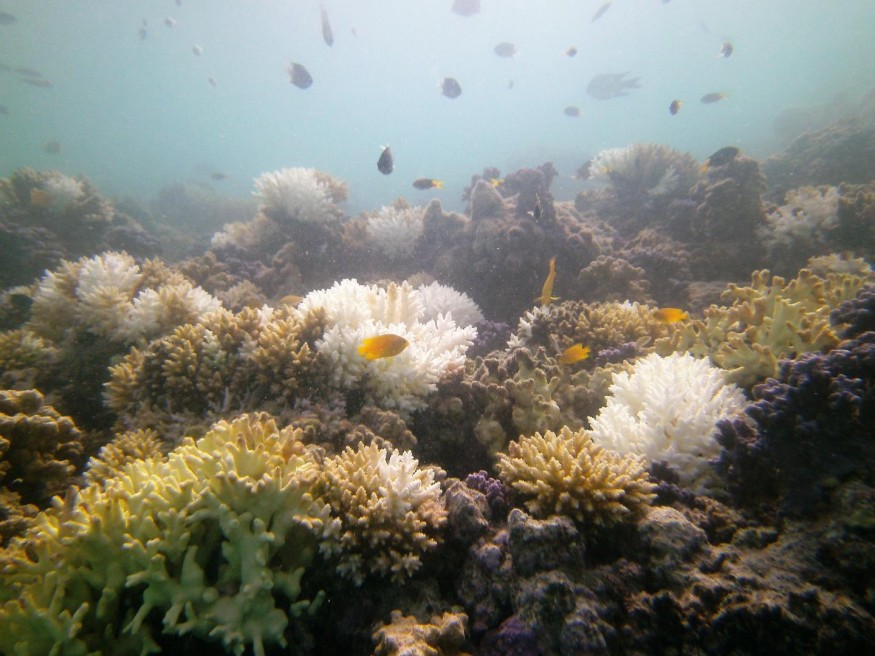According to recent research, fish on Australia's Great Barrier Reef are losing their color as coral reefs deteriorate and die during bleaching episodes.
Researchers in Queensland have discovered a relationship between dull-colored fish and corals that have become white due to coral bleaching.

Recent Discovery
They discovered that the abundance of yellow and green fish has decreased by around three-quarters over the last 27 years.
Experts are now unsure of the specific explanation of the connection between dull-colored fish and bleached coral or whether one affects the other.
Coral reef fish have a wide range of colors, yet the environmental elements contributing to this are unknown. Last week, the Great Barrier Reef was hit by yet another large coral bleaching event, the fourth in as many years.
Dr. Christopher Hemingson of James Cook University in Townsville, Queensland, Australia, led the new research.
"We discovered that as the cover of structurally complex corals on a reef grows, so does the richness and range of colors present on fish living in and near them," stated Dr. Hemingson.
Population

However, when the number of turf algae and dead coral debris grows, the color variety diminishes, giving a more generalized, homogenous look.
Even if coral cover stays high, future reef fish populations may be a duller replica of their past forms.'
Warmer ocean temperatures stress corals, leading them to discharge algae that live inside them and provide them with up to 90% of their energy.
Coral bleaching occurs when the vibrantly colored communities of coral turn white as a result of this catastrophe.
Corals that have been bleached are not dead, but they are at a higher risk of dying, and bleaching episodes are becoming more regular due to climate change.
While some coral reefs can recover over time, others are overrun by algae.
Previous studies have shown that coral can survive bleaching if it obtains nutrients quickly enough, but if not, it can die within days.
Dr. Hemingson and colleagues concentrated their new research on small,' site attached fish - those that can't or won't leave their habitats.
Color patterns in'site-attached' fish are believed to be influenced by the local environment.
The researchers utilized photos of the fish at coral on Orpheus Island, off Australia's eastern coast.
They measured and recognized colors and patterns on every fish in the images, some of which Dr. Hemingson captured personally during dives, using statistical software.
Matching

They then matched the fish colors to the state of the reefs in the various regions where they were discovered ('coral health' refers to whether or not the reefs had been bleached).
Some regions were characterized by an abundance of intricate, 'branching' coral and signified 'healthy' reefs (coral with numerous branches, usually secondary components).
Others were typified by less complicated, massive corals, which typically take over once reefs are disturbed.
Other areas, which represented severely damaged reefs and dead coral, were primarily made up of dirt, coral debris, and algae.
Dr. Hemingson added, "We discovered that the sea floor structure appears to be highly crucial in determining fish coloration."
'When these areas have a lot of live coral cover, we find a lot of fish with diverse colorations.'
'However, when vast volumes of debris and algae characterize environments, those distinctions vanish, and we find a lot of fish that appear extremely similar while being different species.'
Overall, the researchers warn that as coral decreases, vividly colored fish are becoming increasingly rare, with the problem expected to worsen.
Dr. Hemingson noted that fish community coloration fell considerably after the worldwide coral bleaching catastrophe in 1998, which he believes was caused by the loss of branching corals.
Stressors
Human-induced stresses, such as rising ocean temperatures due to global warming, have wreaked havoc on coral reefs during the last 30 years.
'Future reefs may not resemble the vibrant ecosystems we know today,' the researchers write in an article published in Global Change Biology.
'Our findings show that reefs are nearing a key transition point and that in the next years, they will become significantly less colorful.'
For more Environmental News, don't forget to follow Nature World News!
© 2025 NatureWorldNews.com All rights reserved. Do not reproduce without permission.





